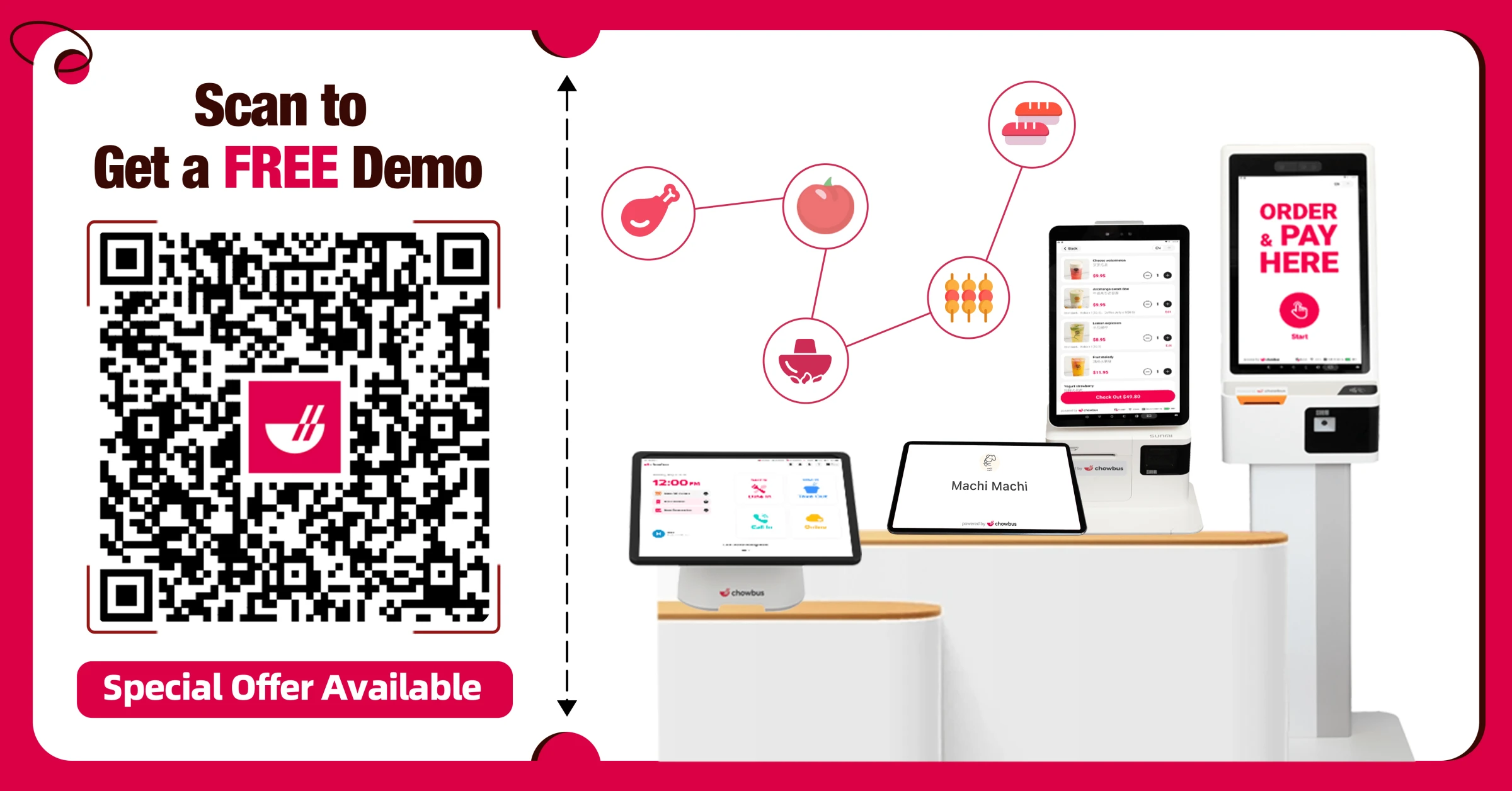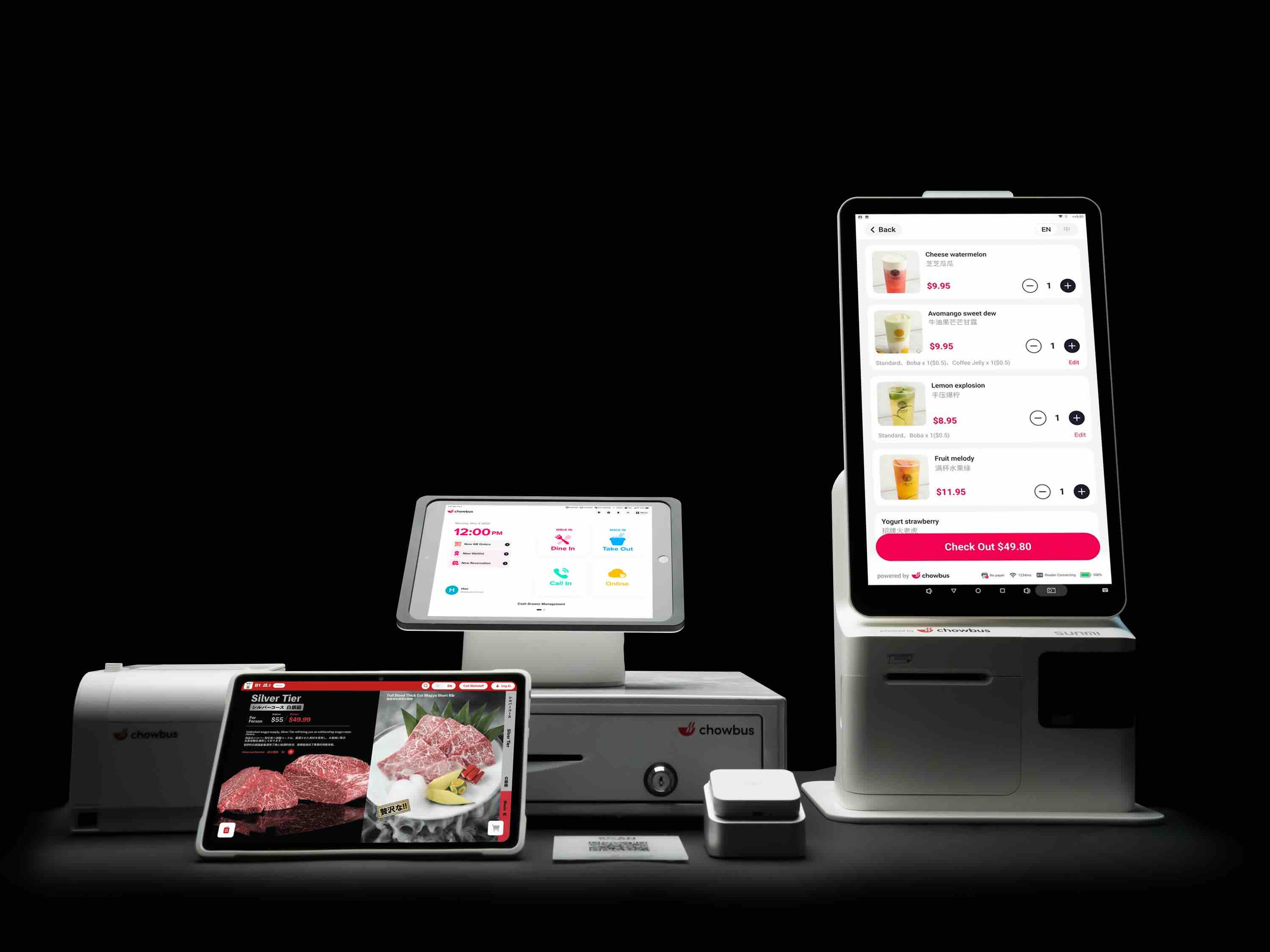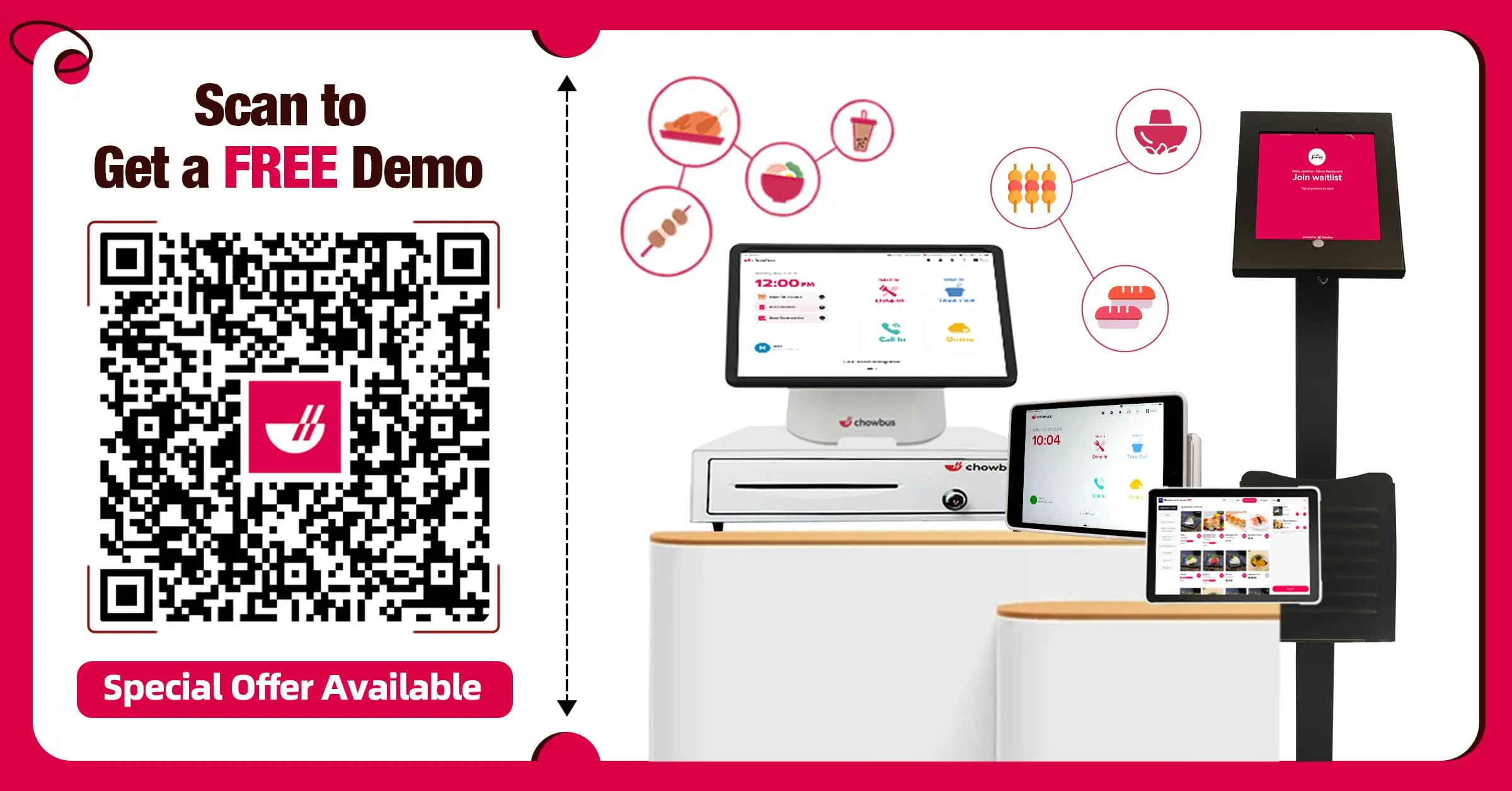Restaurant Robot: The Use of Robots in Restaurants

Have you noticed the new trend of robots serving food in restaurants? Across the industry, from cozy family diners to bustling fast food chains, the use of robots in restaurants is growing. These mechanical helpers, often referred to as restaurant robots, are transforming the way restaurants operate.
This post will explore how are robots used in restaurants, their benefits, and some challenges they may present. By the end, you’ll have a well-rounded understanding of robots working in restaurants and how they might fit into your own business.

What is a Restaurant Robot?
A restaurant robot is a type of robot designed to perform tasks commonly found in restaurant settings, such as taking orders, serving food, and even cooking. These robots are part of a broader category known as service robots in restaurants. They are engineered to interact safely and efficiently with human staff and customers, ensuring that your restaurant's operations are smooth and customer satisfaction is high.
How are Robots Used in Restaurants
When you walk into a restaurant these days, you might notice a new kind of staff member—the robot. Deploying robots in fast food restaurants and fine dining establishments is not just a novelty. It’s a strategic move to enhance efficiency. Here are several key roles that robots that work in restaurants typically fill:
1. Order Taking
Gone are the days of waiting for a server to come and take your order. Robots in restaurants are now taking on this task. They interact with customers, either through touch screens or voice recognition, to take orders accurately and swiftly. This speeds up the ordering process and reduces the chances of human error, ensuring that customers get exactly what they asked for.
2. Food Preparation
In some restaurants, robots assist in food preparation. They can perform tasks like chopping vegetables, mixing ingredients, or assembling dishes. This helps maintain food consistency and frees human chefs to focus on more intricate culinary tasks that require a personal touch.
3. Food Serving
Robots equipped with trays glide through the restaurant, delivering food directly to your table. These robots serving in restaurants are designed to navigate crowded dining areas safely, ensuring that your food arrives promptly and without interruption. It's an efficient way to manage the flow of dishes in and out of the kitchen, especially during busy hours.
4. Cooking
Yes, robots are also stepping into the role of chef in some settings. They handle repetitive cooking tasks like grilling burgers or frying chicken. This automation ensures that every meal is cooked identically, meeting the same high standards every time. It’s perfect for consistency, which is crucial in the culinary world. This is a prime example of kitchen automation, where technology significantly enhances the efficiency and consistency of food production.
5. Bussing
After diners leave, robots can help clear tables. These robotic bussers collect dishes, cutlery, and glassware, transporting them back to the washing area. This helps to keep the dining area tidy and ready for new customers more quickly, enhancing turnover rates.
6. Cleaning
At the end of the day, cleaning robots take over. They can sweep and mop floors, sanitize surfaces, and ensure the restaurant is spotless for the next business day. This helps maintain high hygiene standards and reduces the workload on human staff, allowing them to focus on preparing for the next day.
Incorporating robots into restaurant operations can transform how services are delivered, making them faster, more accurate, and often, more intriguing to customers. Whether taking orders or cooking meals, robots are becoming integral to the restaurant experience.
Advantages of Robots in Restaurants
Implementing robots in your restaurant can bring many benefits, transforming how you manage daily operations and interact with customers. Here’s a list of the key advantages:
Increased Efficiency and Accuracy: Robots excel in speed and precision, ensuring orders are prepared and delivered promptly and correctly. This precision helps reduce human errors, which can be crucial during busy hours.
Reduced Labor Costs: While the upfront investment might be notable, robots can significantly cut long-term labor expenses. They can handle repetitive tasks, allowing you to allocate human resources to more critical areas that require a personal touch.
Continuous Operation: Robots don’t need breaks or time off. They can work around the clock, handling preparations during slower hours and ensuring your restaurant is ready to go during peak times. This non-stop operation is key to maximizing productivity.
Customer Attraction: The novelty of robotic technology can turn your restaurant into a local attraction. Customers are often intrigued by high-tech service experiences, which can enhance your establishment's reputation and bring in more traffic.
Seamless Peak Time Operations: By working tirelessly during off-hours, robots ensure that your restaurant operates at peak efficiency when it matters most. They can prep ingredients, set up dining areas, and ensure that everything is in place to handle a rush.
These benefits showcase how robots can be more than just a technological upgrade—they can be a strategic enhancement to your restaurant's operations, offering immediate improvements and long-term gains.
Disadvantages of Robots in Restaurants
While integrating robots into your restaurant can offer numerous benefits, it's essential to consider the potential downsides to ensure you make a well-informed decision. Here’s a closer look at some challenges you might face:
High Initial Investment: The upfront cost of purchasing, installing, or renting robots can be substantial. Depending on the type and number of robots you consider, this could represent a significant financial commitment.
Ongoing Maintenance Costs: Like any sophisticated technology, robots require regular maintenance to function optimally. This includes software updates, hardware repairs, and possibly service fees, which can add up over time.
Technical Challenges: Robots can malfunction or require updates at inconvenient times, disrupting service and potentially causing operational delays.
Skill Gap: Staff may require training to effectively operate and maintain new robotic technology. This involves additional time and cost, and there's a learning curve to consider.
Complex Human Interaction: Robots are not yet capable of fully replicating the human touch. In situations that require empathy, humor, or personal attention, a robot's interaction may fall short, potentially impacting the customer experience negatively.
Customer Perceptions: Some customers may view the use of robots as a gimmick or feel uncomfortable interacting with them. Others might miss the personal touch that human servers bring to the dining experience.
By considering these factors, you can better gauge whether introducing robots aligns with your restaurant’s operational goals and customer expectations.
Robot-Helpers at Your Service: Provided by RuTech Robotics
At Chowbus POS, we understand that integrating technology into your restaurant might seem daunting. As your go-to provider for enhancing operational efficiency, we partner with RuTech Robotics, the exclusive distributor and technical service partner of Pudu Technology in North America.
RuTech excels in promoting commercial service robots within the restaurant industry, offering a range of advanced robotic solutions designed to make the transition seamless and beneficial. Each robot is crafted with unique capabilities to suit various operational needs, revolutionizing your establishment's efficiency and customer service. Let’s explore some standout models that could elevate your restaurant's functionality and customer experience.

1. BellaBot: The Friendly Server
BellaBot, the premium delivery and reception robot, will blend charm and advanced technology into your restaurant. Bella is not only about looks. It features a 3D obstacle avoidance system to navigate safely around the restaurant, ensuring all interactions are safe and efficient. With its quick power exchange system, BellaBot is always ready to assist, operating around the clock without interruptions. The dual navigation system, combining visual and laser SLAM, allows Bella to adapt to various environments, making it a versatile addition to any setting.

2. KettyBot: Compact and Versatile
KettyBot embodies a minimalist design that excels in tight and crowded spaces. Its slim, forward-leaning structure can easily navigate through narrow passageways, making it ideal for smaller or densely arranged environments. The large, smart color display grabs attention and allows customized content, enhancing your marketing efforts. KettyBot is a dual-function marvel, adept both as a delivery robot and a digital usher, guiding guests to their seats or serving them directly.

3. SwiftBot: The Efficiency Expert
SwiftBot is designed to streamline operations with its automatic opening door feature, facilitating touch-free deliveries. Equipped with smart visible indicators and omnidirectional perception, Swift ensures a safe operational environment by prioritizing pedestrian movement and seamlessly integrating with your existing digital infrastructure. This robot is a powerhouse of efficiency, enhancing service delivery speed and quality in any busy restaurant setting.

4. PuduBot Series: Smart and Adaptable
The PuduBot series is renowned for its intelligent delivery capabilities. The original PuduBot and the newer PuduBot2 feature advanced navigation technologies that ensure smooth and safe operation. These robots have flexible trays and various customization options to meet your restaurant's needs. Whether you’re looking to increase delivery speed or ensure safety with high-end sensors, the PuduBot series is equipped to handle the demands of a modern restaurant.

5. HolaBot: The Heavy Lifter
HolaBot is the answer to handling substantial delivery tasks within larger venues. With a robust carrying capacity of 60 kg and waterproof compartments, HolaBot excels in environments where large orders are the norm. This robot combines size with smart technology, featuring a pager function for easy tracking and command, ensuring that operations run smoothly and efficiently, regardless of scale.
RuTech Robotics demonstrates a strong commitment to pushing the boundaries of what’s possible in restaurant service. Adopting these robotic solutions not only addresses common operational challenges but also enhances the dining experience through innovative technology and reliable performance.
Interested in seeing these robots in action? We invite you to experience the future of restaurant service with a personalized demonstration of this technology.
The Future of Robots in Restaurants
As technology progresses, the role of robots in restaurants is set to expand. We already see robots that cook, serve, and chat with customers. But what’s next? Expect robots to take on more complex tasks, like customizing orders on the fly and managing real-time inventory updates. They might also use AI to predict customer preferences, offering a personalized dining experience that’s both efficient and engaging.
Moreover, as these technologies become more refined and affordable, smaller restaurants and new startups will likely adopt robotic solutions, making this a common feature across all dining venues. This isn’t just about replacing human tasks—it’s about enhancing the capabilities of human staff and offering unmatched precision and efficiency in restaurant operations.
So, while the face of dining might change, the goal remains the same: to deliver exceptional service and a memorable dining experience. With robots in the mix, we’re well on our way to achieving that with remarkable consistency and innovation.
Conclusion
Embracing robots in the restaurant industry offers both challenges and opportunities. These technological advancements improve operational efficiency and customer service, yet require thoughtful integration. For restaurant owners, leveraging robotic solutions means enhancing service without losing the personal touch that defines the dining experience. As you consider how robots could fit into your operations, balancing innovation with human warmth will be key to success.
Interested in transforming your restaurant with cutting-edge technology?
Book a free demo or consultation with Chowbus POS today and discover how our all-in-one restaurant POS system, in partnership with RuTech’s advanced service robots, can elevate your operational efficiency and increase revenue. Don’t wait—revolutionize your restaurant with the power of automation!

Frequently Asked Questions About Restaurant Robots
Explore these commonly asked questions about restaurant robots to better understand how they can enhance service and efficiency in your establishment. Here, you'll find insights into their roles, capabilities, and the value they can add to your operations.
Will Robots Replace Waiters?
While robots are increasingly used in restaurants for tasks like serving food and taking orders, they are unlikely to completely replace human waiters. Robots excel in repetitive and routine tasks, enhancing efficiency and consistency. However, the human touch—characterized by personal interaction, emotional understanding, and the ability to handle complex customer needs—remains crucial in the dining experience. Therefore, robots are more likely to work alongside human staff, complementing their roles rather than replacing them entirely.
Do People Control the Food Delivery Robots?
No, people do not directly control food delivery robots. These robots operate autonomously using pre-programmed routes, sensors, and GPS to navigate and deliver orders without human intervention. Human oversight is typically limited to monitoring their operations and intervening only if issues arise.
What is the Future of Robots in Restaurants?
The future of robots in restaurants looks promising, focusing on enhancing efficiency, reducing operational costs, and improving customer service. Robots increasingly handle repetitive tasks like cooking, serving, and cleaning, allowing staff to focus on customer engagement and service quality. As technology advances, more restaurants are expected to adopt robotic solutions to streamline operations and provide novel dining experiences.
How Do Robot Waiters Know Where to Go?
Robot waiters use sensors and cameras to navigate the restaurant space. They are often guided by pre-programmed maps and real-time data to accurately locate tables and avoid obstacles, ensuring efficient and prompt service.
Are Robot Waiters Worth it?
Yes, robot waiters can be worth it for restaurants looking to reduce labor costs and enhance operational efficiency. They provide consistent service and can handle repetitive tasks effectively. However, the initial investment can be high, and their suitability depends on the restaurant's theme and customer expectations. Consider your specific needs and budget before deciding.

Recommended Articles: